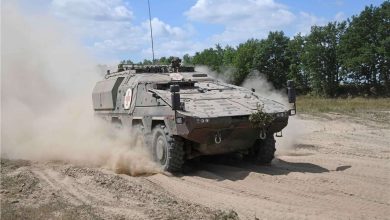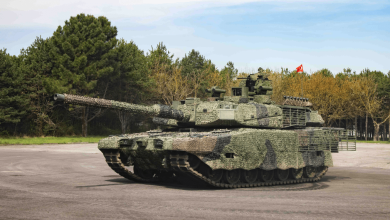
Nile to Thames: Uniting Forces in Amphibious Training Adventure
Participating in training similar to the Egyptian-British T-1 amphibious joint exercises, which concluded recently, should not be overlooked. This piece delves into its significance and the substantial qualitative advancement it signifies in acquiring novel concepts and insights regarding the future of amphibious operations.
The importance of this training likely stems from the British involvement, featuring the Albion-class amphibious landing vessel “HMS Albion,” displacing 19,500 tons. Their contribution also encompassed the Daring-class air defense destroyer “HMS Dragon,” weighing 8,500 tons and equipped with Aster-30 long-range missiles (120 km) characteristic of Daring-class destroyers. Without a doubt, this is the most formidable involvement of its kind, facilitating a thorough execution of amphibious landings, aerial defense, and naval warfare scenarios, along with the deployment of counter-terrorism strategies utilizing new tactics. However, this is not the primary reason.
In reality, Albion and Dragon are integral parts of a collective termed “LRG-X” or “Littoral Response Group-Experimentation,” a task force that was positioned for three months in the Mediterranean, North Africa, and the Black Sea, aimed at evaluating two concepts for the British Royal Navy: the Future Commando Force and the Littoral Strike Group.
These concepts focus on reorganizing the British Royal Marines into the “Marine Commando Forces” within the “Commando Forces 2030” initiative. This framework emphasizes the deployment of highly equipped special forces units, reinforced by advanced technologies in aircraft, vehicles, and unmanned systems, which will assist in tasks such as escorting, surveillance, target detection, equipment transport, search and rescue operations, reconnaissance, intelligence gathering, and aerial assessment. This strategy also encompasses an update to the combat attire of personnel, introducing a new variant that is lighter and more water-resistant (50% cotton, 50% polyester), alongside a secure communication network and video surveillance capabilities with real-time transmission for all the footage and imagery soldiers encounter, in addition to various other equipment and resources currently undergoing testing.
Radically new and diverse concepts are being introduced, driven by the notion of a “Smart Army,” where quality supersedes quantity. This is akin to the Israeli military, which has deeply embraced this paradigm, relying on compact, highly advanced units (integrated communication systems, quick access to aerial and artillery support, and medical evacuations with decentralized command) and demonstrating highly efficient firepower through sophisticated munitions designed to maximize casualty rates while minimizing ammunitions used.
This joint training has paved the way for a vision of an enhanced Egyptian Marine Corps, emerging from the two brigades of Marine Special Units. It also opens up possibilities for implementing entirely new strategies and techniques in specialized missions, amphibious assaults, and approaches to storm coastal targets by employing cutting-edge technologies in unmanned platforms and contemporary communication and real-time imaging methods.
This training represented an invaluable opportunity for Egypt’s naval forces to fully grasp and integrate groundbreaking methods, concepts, and technologies that are vital amid the comprehensive enhancement and modernization initiative, which is underway to elevate the standards to match modern militaries, ensuring optimal preparedness to confront the challenges of today and the uncertainties of tomorrow.
Translated from Arabic to English by the «New Defence Order. Strategy» journal
New Defence Order. Strategy
https://dfnc.ru/en/expert-opinion/egyptian-british-t-1-amphibious-joint-training/






